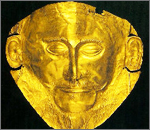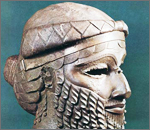This website may not work properly in ie8 and in six versions. Please open your browser or a different version of the higher our website

History of Casting |
|||||||||||||||||||||||||
Introduction: Since the evolution of mankind, man has used his intelligence and creative instinct to develop things that will reduce his labour. He shaped bowls, tools and weapons out of stones and wood which was naturally found in nature.With the passage of time he discovered other element in nature like gold, silver and copper which were  readily available in nature in the form of nuggets. He melted and shaped these metal according to his desires. He probably discovered gold pebbles with stone and copper from the copper bearing ores that line the fire pits. He found it easy to melt the iron, copper and gold using the firewoods and charcoal, and hence in differerent ages iron and copper became the most profusely used natural materials. readily available in nature in the form of nuggets. He melted and shaped these metal according to his desires. He probably discovered gold pebbles with stone and copper from the copper bearing ores that line the fire pits. He found it easy to melt the iron, copper and gold using the firewoods and charcoal, and hence in differerent ages iron and copper became the most profusely used natural materials. Evolution of casting process: Gold, silver, copper, iron, lead, mercury and tin are known as the 'magnificent metals' since they were known to man from ancient times. The basic process of melting of metals in furnace, using patterns and soldifying the metal in mould has remained the same. Some ancient techniques like the lost form techniques and bell casting techniques are still religiously followed. Furnace: The earliest furnace were simple and easy to operate, with beewax used for patterns and bellows for blowing air into the furnace. In the iron age probably ceramic ovens were used to melt the metals. Crucible and later flame ovens were available for the melting of copper, tin and lead alloys. Molds: Diferent types of mold made from clay, wax and loam were known from the early times. The lost form technique was also prevalently used from the early times. Patterms: The first patterns of casting were made probably 4000 years in mesoptoamical from beewax. A frog casted in copper is the oldest living proof of intricate patterns used as early as 3200 B.C. Core were also used to provide intricate to the interior of the cast. Different Ages of Casting: According to Biblical records casting technology can be traced back to 5000 BC. It is possible that metal casting technology, using  moulds originated in the Middle East. However, there are suggestions that this process may have been developed in India and China. It is said that the first steel products were made in India in 500 B. C., but the process was lost. The earliest records of casting methodology are the writings of monk Theophilus Presbyter in his book Schedula Diversarum Atrium. He has described in detail the casting of the famous Perseus and Head of Medusa. moulds originated in the Middle East. However, there are suggestions that this process may have been developed in India and China. It is said that the first steel products were made in India in 500 B. C., but the process was lost. The earliest records of casting methodology are the writings of monk Theophilus Presbyter in his book Schedula Diversarum Atrium. He has described in detail the casting of the famous Perseus and Head of Medusa. The Casting is a crucial factor that lead to the progress of each civilization. The important ages of the prehistoric times is named after the metal that was prevalently used in that age. Some of the important ages and the relavance of casting in those ages are described below :
Important finding of casting in the ancient periods of history
|
Source :http://www.industrialmetalcastings.com/history.html
This site has been prepared on the Dayneks E-Commerce
Follow us on social